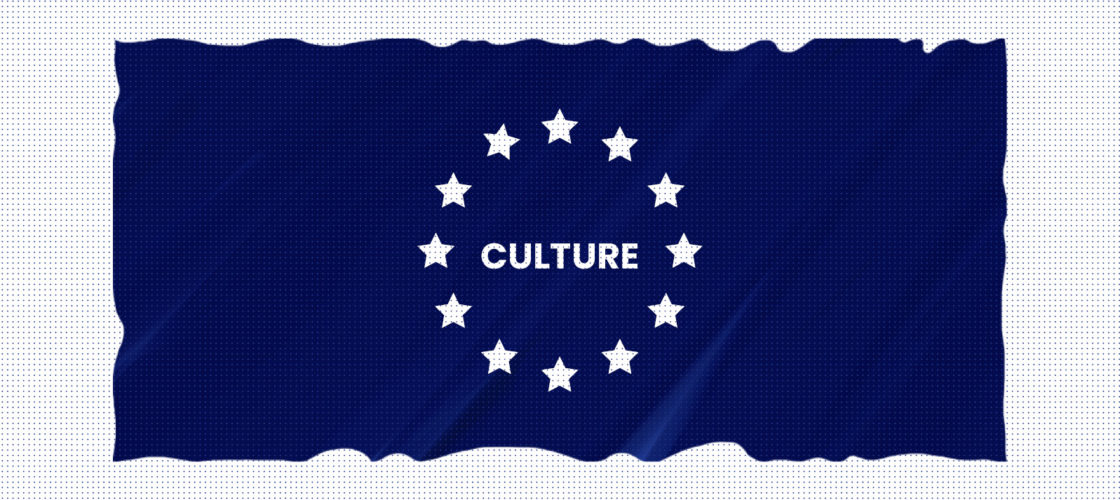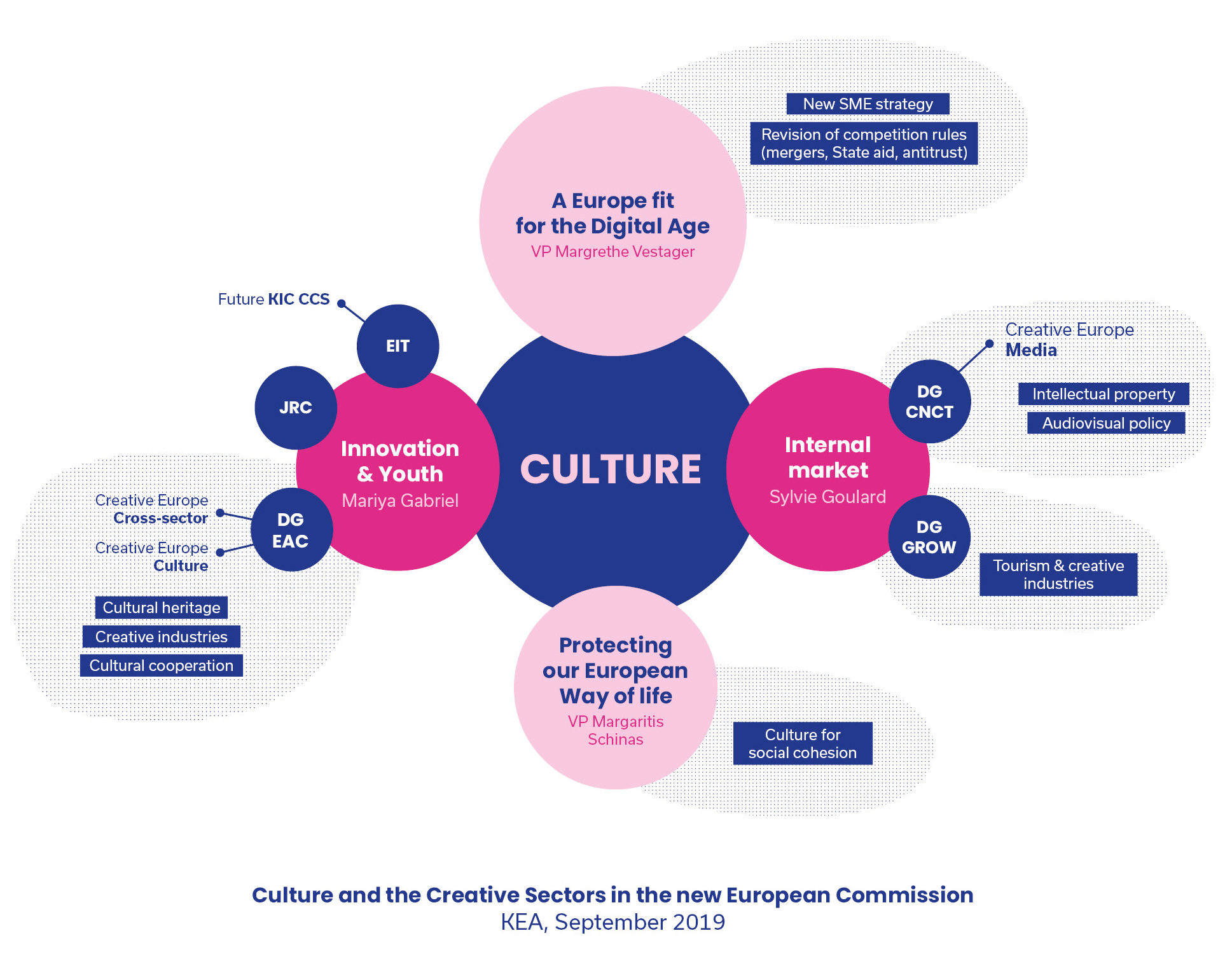
Where is culture?
The question was on everyone’s lips across the European cultural sector the day President von der Leyen announced the composition of her new team. Called a ‘mistake’, reported as ‘missing’, what happened to the Education, Culture, Youth and Sport portfolio?
Acknowledging the concerns over the absence of the word ‘culture’ among the Commissioners’ titles, this short article attempts to cast a new light on what a future transversal European cultural policy could be under the von der Leyen Presidency.
The figure below illustrates where the cultural competence lies in the new European Commission. 1

Former Digital Economy and Society Commissioner Mariya Gabriel gets the Innovation and Youth portfolio which includes Education, research and innovation together with Culture, youth and sport. She is therefore responsible for DG EAC which implies the Culture and Cross-sector strands of the Creative Europe Programme as well as for the Joint Research Centre (JRC) which produces research notably on the cultural dimension of European cities and regions through its Cultural and Creative Cities Monitor 2 and for relations with the European Institute of Innovation and Technology (EIT). Concerning the latter, a first Knowledge and Innovation Community (KIC) in the field of Cultural and Creative Industries will be launched in 2022 with a 7-year financial support from the EIT. 3
Gabriel’s mission notably includes:
- The implementation of the New European Agenda for Culture 2019-2022 as well as the European Framework on Cultural Heritage;
- The promotion of creative industries as a catalyst for innovation, jobs and growth as part of an ambitious Creative Europe Programme with an increased budget;
- Enhancing the cultural dimension of external relations which was relatively absent under the current mandate.
What is new?
Looking at both the architecture and content of the Innovation and Youth portfolio, one could argue that the innovation and international components of the cultural policy will be strengthened under the new mandate.
At the same time, the ability of cultural activities to improve mental and physical wellbeing and to connect people from diverse backgrounds is embodied in the guidance of the Vice-President for Protecting our European Way of Life. Let aside the debate over the name of Margaritis Schinas’s portfolio, it is high time that a European cultural policy took into account demographic changes (including an ageing population and migration) as well as social issues to ensure a wide and inclusive participation in culture.
DG Communications Networks, Content and Technology (DG CNECT) remains unchanged, retaining the Creative Europe MEDIA Programme and audio-visual policy under the supervision of Sylvie Goulard. The French Commissioner has been entrusted with a substantial portfolio for Internal Market including DG CNCT, DG GROW and well as a new DG for Defence Industry and Space.
Interestingly this strong industrial portfolio includes audio-visual policy at a time when economic and technological sovereignty becomes the hot topic in the backdrop of the growing influence of the GAFAM. The European audio-visual industry needs a strong leadership and support to remain competitive while non-European digital giants such as VOD providers weight more than 18 times more than public service media and 10 times more than the top 10 European commercial broadcasters. To promote the innovation capacity and preserve the diversity of our cultural and creative industries in such context needs a bold cultural strategy.
The guidance of the Vice-President for A Europe fit for the Digital Age Margrethe Vestager shall be instrumental in taking into account the cultural dimension in competition policy and especially in relation to digital global companies.
Clémentine Daubeuf
Sources:
[1] Therefore, it does not include the whole Commissioners’ portfolios and relative DGs.
[2] Which latest edition Social integration in European Creative Cities will be presented on October 8th 2019 during the European Week of Regions and Cities.
[3] European Institute of Innovation and Technology: Commission proposes strategy for 2021-2027